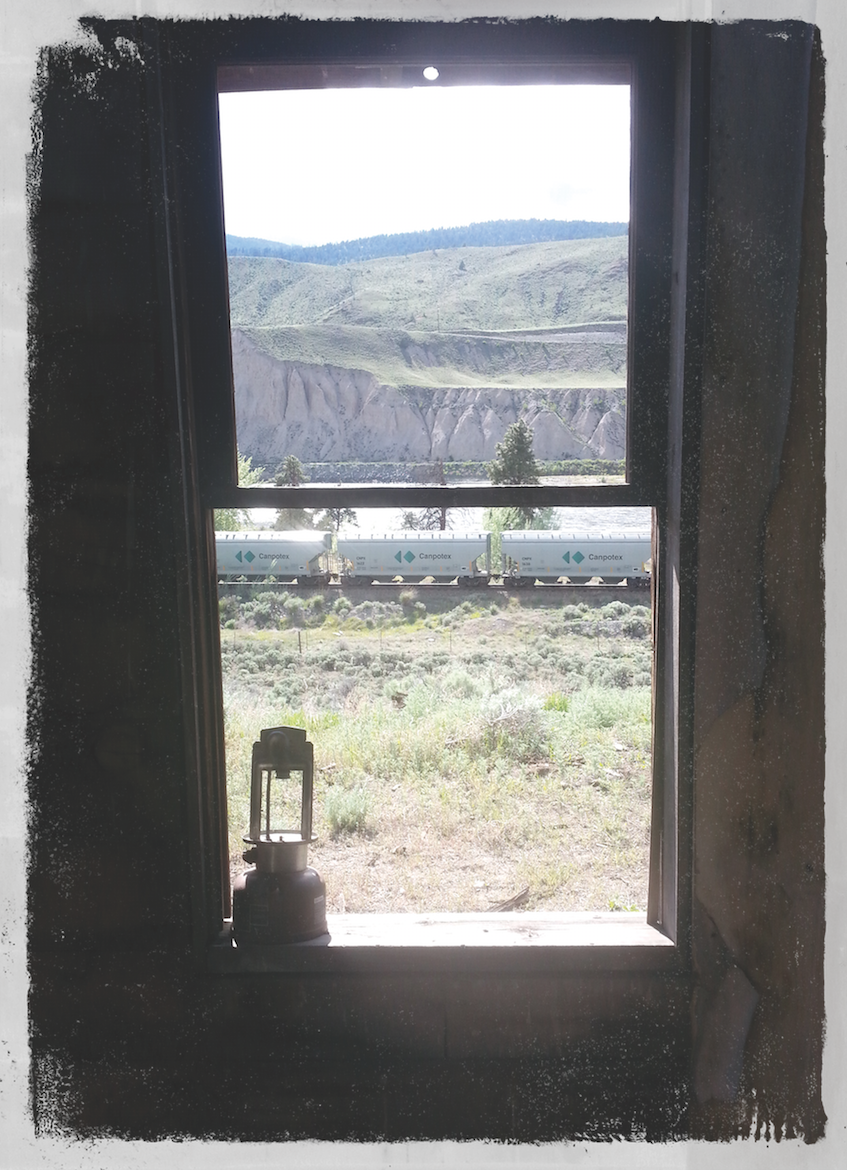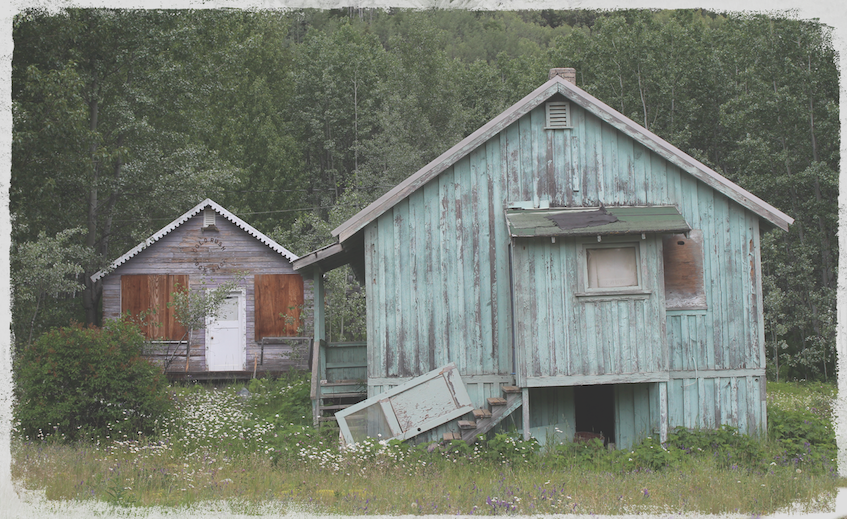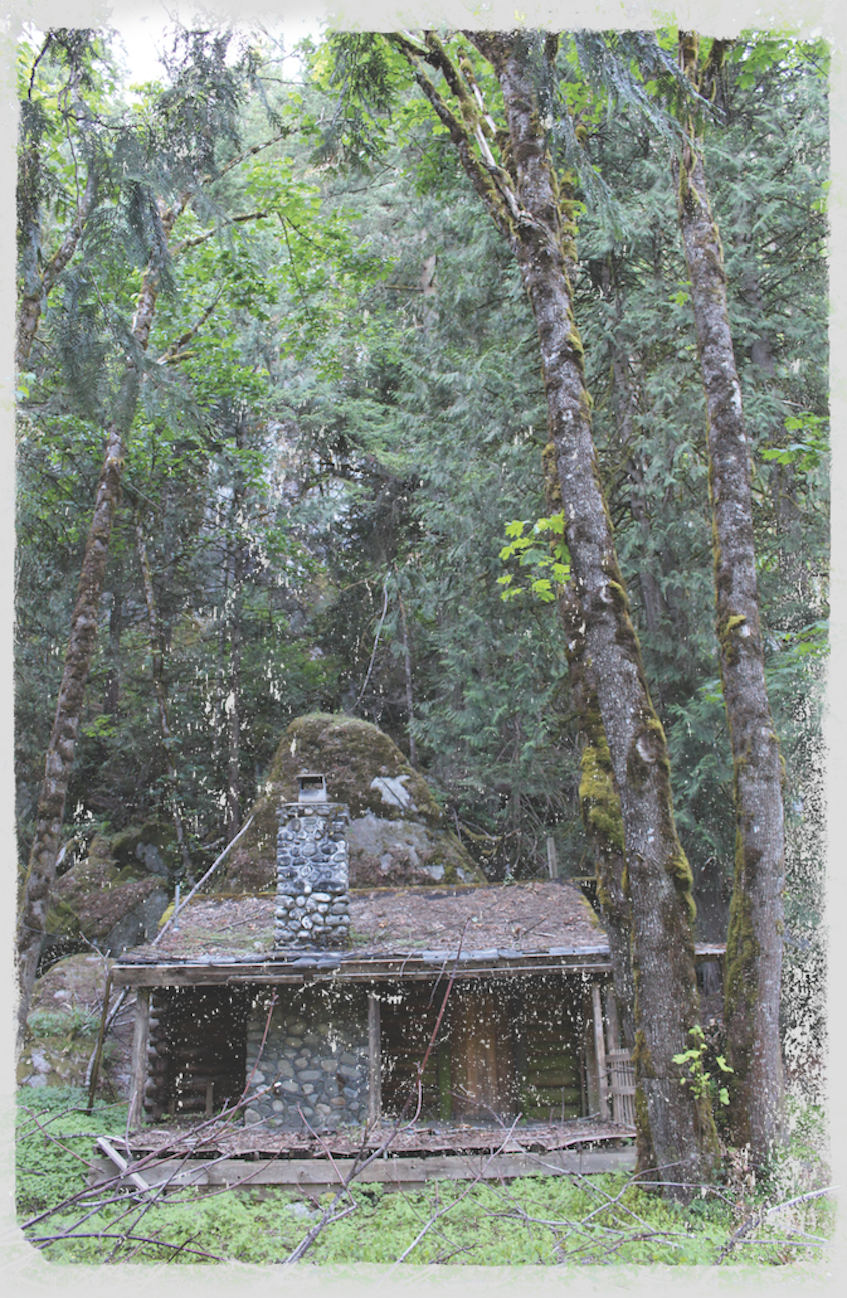By Vanessa Broadbent (The Cascade) – Email
Print Edition: July 1, 2015
We had driven by the abandoned cabin every time we went to Cultus Lake, but it took a few summers to build up the courage to go in. It had to be at night, of course — nothing could be scarier than wandering through a potentially haunted house in the dark. There were three of us, huddled together and sharing one flashlight, slowly making our way through the house.
The floorboards sagged beneath us with each step we took. The windows of the cabin had been smashed out long ago, leaving no barrier between it and the outside world. A few decades of snowy winters and the endless rain the Fraser Valley is known for had left the cabin rotting away.
Although it wasn’t bright enough to see the whole room, I could tell there was quite a bit of furniture left behind, giving the place an even eerier feel. Every noise and shadow made us jump and cling tighter to each other. Even so, after making it through the entire house, including the basement, we left feeling braver than ever.
That experience was enough for my friends — they could brag that they had been in the haunted cabin by the lake, but they didn’t want to do it again. I felt differently. There was something about stepping into what had once been someone’s home but was now derelict that was strangely enticing. It felt like I was being allowed to look into someone’s life — but only what they wanted me to see, what they had left behind.
Fast-forward five years and innumerable abandoned buildings, and my desire to explore such places has not died down. Maybe it’s the thrill of being somewhere that just might be haunted, or feeling like I’m stepping into a piece of local history. Either way, urban exploration is addictive.
Essentially, urban exploration is just that: the exploration of urban or man-made areas. Every place has its own kind of building to explore, depending on the area’s history and geography. Every urban explorer’s dream is to visit Detroit, a city with entire blocks of abandoned buildings — including schools, theatres, hospitals, and so on — but British Columbia has a lot to offer as well.
While BC might not have many large abandoned buildings, the province’s history makes up for it. After the gold rush ended, for example, and people left to find work elsewhere, houses and even whole towns were left completely abandoned. Some of them, like Barkerville in the Interior, have been restored and are now tourist attractions — but not all. BC’s ghost towns are not the same as how they are usually portrayed in movies, where the saloon doors are intact and the piano in the corner is just out of tune enough that anything played sounds hauntingly beautiful. But that doesn’t mean they are any less exciting.
It was a four-hour drive to the first ghost town I explored. During its peak in the gold rush, the town had a population of 800 people, but a smallpox epidemic in the mid-1800s left the town abandoned. By the time I visited, over 150 years later, all that was left were a few abandoned cabins (one of which used to be the town’s general store), an old ranch, and a church. This was more than enough for me, and I spent nearly the entire day walking around the town or sitting in the old church, staring at the painting of the last supper that hung crooked over the decaying pulpit.
It was the oldest place I had yet explored, and it had so much more history; it was not just another abandoned house where the family decided to move and left behind a few belongings they didn’t want anymore. This town had, at one point, played a part in our province’s history. The people who lived and worked there contributed to the world we live in today.
Although the town had been sitting abandoned and lifeless for years and its residents were long gone, it didn’t feel that way while walking through it. It wasn’t hard to imagine where the now completely overgrown roads would have been. Even the cabins seemed to still have a bit of life left in them. While many of them were nearly empty from years of pickers and antique collectors taking their belongings, one cabin was different. In the middle of the room was a large wood stove that at the time would have been used to heat the whole cabin. A smaller stove, this one with boilers on top for cooking, sat across the room. An old, rusted tea kettle sat on the stove, ready to be used. Other than a little tidying up and a bit of renovation, all the cabin lacked was a family.
This particular ghost town also brought new challenges I had not yet faced while exploring. At this time, I hadn’t explored anywhere that had been this far “out in the middle of nowhere.” Not only was I an hour down an old logging road without any service, but this was unfamiliar territory to me. While I had vacationed in the desert growing up, exploring a ghost town in it was completely different. Over the years, the town had become overgrown and although it was no longer a home to any people, the same couldn’t be said about wildlife. Having to worry about disturbing any rattlesnakes was definitely not something that I was used to, or very thrilled about.
Venturing up north offers buildings full of history; abandoned buildings in the city are not nearly as old, but decay just as quickly due to vandalism and exposure. The two types of urban exploration require different skillsets and levels of preparedness.
The most important thing to remember is that although it may look like no one has set foot in the building for years, someone still owns the property, and you may be trespassing. So it can help to knock on a neighbour’s door to ask if they know whether the owner would mind if you looked around. Most urban explorers mean no harm and only want to explore.
Familiarizing yourself with the province’s trespassing laws is helpful; what can be hard is actually following them. If there is a No Trespassing sign, a fence you have to climb, or a door or window to force open, you are trespassing, possibly breaking and entering, and can be criminally charged. As tempting as a building may be, facing criminal charges is never worth it.
Even if you’ve taken precautions and made sure you’re not breaking the law, urban exploration can still be a dangerous hobby.
Always prepare for the worst — even expect it. One abandoned house may seem so freshly abandoned that you feel you might be able to take your shoes off, but the next could have floors covered in nails and shards of broken glass. Be prepared for unsafe conditions like rotting floors or collapsing roofs.
Also, thoroughly research the area, especially if the site is not close to civilization. While this may not be a problem in highly urban areas, encountering bears and other wildlife is not uncommon, especially the further you get from the city.
Researching the area for potential dangers is a priority, but you can also research other sites in the area. Nothing is worse than getting home from a three-day road trip to a ghost town, only to realize there were others nearby you didn’t know about.
Despite the dangers, urban exploration is a rapidly growing hobby across North America. It may not be for the faint of heart, but anyone interested in local history or even just up for a scare should think twice before driving past an abandoned building … at their own risk, of course.





